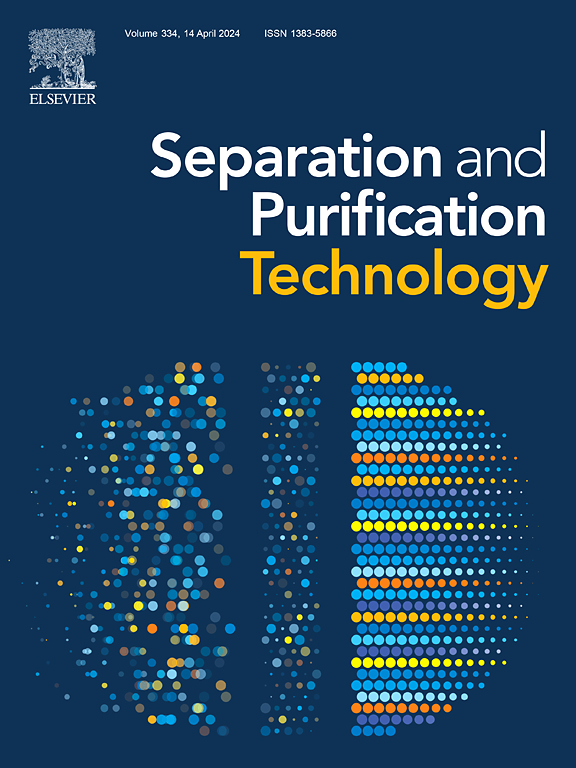From precious metal recovery to value-added MOF synthesis: Stable ZIF-8-hydrogel beads for sustainable multistage pollutant treatment
IF 8.1
1区 工程技术
Q1 ENGINEERING, CHEMICAL
引用次数: 0
Abstract
Traditional copper-containing wastewater management has raised attention of remediation and recovery of precious metal, while the removal of emerging organic pollutants has become one of the more challenging issues in water treatment. Hence, ZIF-8 doped Sodium alginate (SA) is used to prepare ZIF-8@SA gel beads for Cu2+ recovering, and 2-methylimidazole is introduced into ZIF-8@SA coordinating with the recovered Cu2+ to prepare an adsorbent (named ZIF-8@SA@Cu-MOF) for the efficient removal of tetracycline hydrochloride (TC) in this study. The excellent adsorption performance of ZIF-8@SA is significantly optimized due to the electrostatic attraction, complexation reaction, coordination reaction, and ion exchange. The adsorption capacity for Cu2+ reaches 182.61 mg/g, indicating a substantial presence of Cu2+ in the material that offers ample synthesis sites for the in-situ formation of Cu-MOF. The maximum adsorption capacity of prepared ZIF-8@SA@Cu-MOF for TC reached 152.2 mg/g, attributed to the stability of material and strong interaction with TC molecules. Safety evaluation experiments show that the maximum leaching concentration (1.57 mg/L) of Cu2+ from ZIF-8@SA@Cu-MOF is below the regulatory limit of 2 mg/L, confirming its safe application. This study addresses the gap in heavy metal recovery and organic pollutant treatment, with significant implications for industrial wastewater management and contaminant remediation.


求助全文
约1分钟内获得全文
求助全文
来源期刊

Separation and Purification Technology
工程技术-工程:化工
CiteScore
14.00
自引率
12.80%
发文量
2347
审稿时长
43 days
期刊介绍:
Separation and Purification Technology is a premier journal committed to sharing innovative methods for separation and purification in chemical and environmental engineering, encompassing both homogeneous solutions and heterogeneous mixtures. Our scope includes the separation and/or purification of liquids, vapors, and gases, as well as carbon capture and separation techniques. However, it's important to note that methods solely intended for analytical purposes are not within the scope of the journal. Additionally, disciplines such as soil science, polymer science, and metallurgy fall outside the purview of Separation and Purification Technology. Join us in advancing the field of separation and purification methods for sustainable solutions in chemical and environmental engineering.
 求助内容:
求助内容: 应助结果提醒方式:
应助结果提醒方式:


